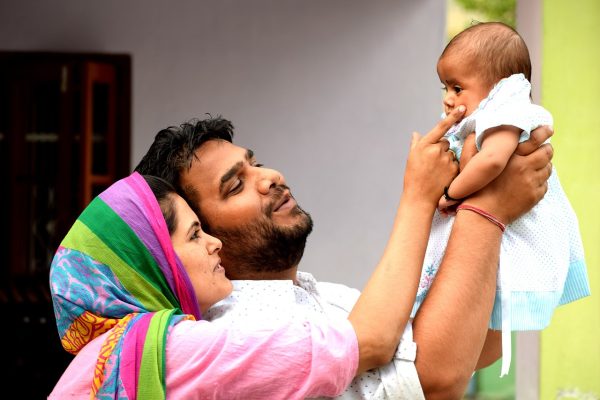
How do different types of parental discipline behaviors affect children’s development in low- and middle-income countries (LMICs)? A group of researchers set out to understand that question. They used a large data set from UNICEF of several hundred thousand families. The data came from the fourth (2009–2013) and fifth (2012–2017) rounds of the UNICEF Multiple Indicator Cluster Surveys.
“The majority of parenting research is conducted in higher income and Westernized settings. We need more research that shows what types of parenting behaviors are most effective at promoting children’s development in lower resourced settings outside of the United States. I wanted to conduct an analysis that provided helpful direction for families and policymakers in LMICs regarding what parents can do to raise healthy, happy children,” said Kaitlin Paxton Ward, People Analytics Researcher at Google and Research Affiliate at the University of Michigan.
Dr. Paxton Ward is the lead author on the recently-released paper, “Associations between 11 parental discipline behaviors and child outcomes across 60 countries.” Other authors are also cited in the article: Andrew Grogan-Kaylor, Julie Ma, Garrett T. Pace, and Shawna Lee.
Together, they tested associations between 11 parental discipline behaviors and outcomes (aggression, distraction, and prosocial peer relations) of children under five years in 60 LMICs:
- Verbal reasoning (i.e., explaining why the misbehavior was wrong)
- Shouting
- Name calling
- Shaking
- Spanking
- Hitting/slapping the body
- Hitting with an object
- Beating as hard as one could
- Removing privileges
- Explaining
- Giving the child something else to do
Results
Verbal reasoning and shouting were the most common parental discipline behaviors towards young children. Psychological and physical aggression were associated with higher child aggression and distraction. Verbal reasoning was associated with lower odds of aggression, and higher odds of prosocial peer relations. Taking away privileges was associated with higher odds of distraction, and lower odds of prosocial peer relations. Giving the child something else to do was associated with higher odds of distraction. The results indicated that there was some country-level variation in the associations between parenting behaviors and child socioemotional outcomes, but also that no form of psychological or physical aggression benefitted children in any country.
Conclusion
Parental use of psychological and physical aggression were disadvantageous for children’s socioemotional development across countries. Only verbal reasoning was associated with positive child socioemotional development. The authors suggest that greater emphasis should be dedicated to reducing parental use of psychological and physical aggression across cultural contexts, and increasing parental use of verbal reasoning.
The technology used to analyze the data
The researchers relied on a complicated Bayesian multilevel model. This type of analysis incorporated knowledge from previous studies to inform the current analysis, and also provided a way for the researchers to look in more detail at variation across countries. To accomplish this task, the team turned to ITS Advanced Research Computing (ARC) and the Great Lakes High-Performance Computing Cluster. Great Lakes is the largest and fastest HPC service on U-M’s campus.
“I know for me as a parent of young children, you want the best outcome. I have known people to grow up with different forms of discipline and what the negative or positive influence of those are,” said Brock Palen, ARC director.
The researchers also created a visual interpretation of their paper for public outreach using a web app called ArcGIS StoryMaps. This software helps researchers tell the story of their work. With no coding required, StoryMaps combine images, text, audio, video, and interactive maps in a captivating web experience. StoryMaps can be shared with groups of users, with an organization, or with the world.
All students, faculty, and staff have access to ArcGIS StoryMaps. Since 2014, U-M folks have authored over 7,500 StoryMaps, and the number produced annually continues to increase year-over-year. Explore examples of how people around the world are using this technology in the StoryMaps Gallery.
“This intuitive software empowers the U-M community to author engaging, multimedia, place-based narratives, without involving IT staff,” said Peter Knoop, research consultant with LSA Technology Services.
Correspondence to Dr. Kaitlin Paxton Ward, kpward@umich.edu.
